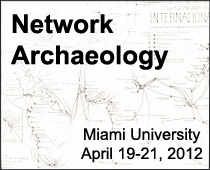Presentation by John Shiga (McGill University).
In the 1950s and 1960s, renowned neurophysiologist, John C. Lilly, received funding from several U.S. government agencies including NASA and the U.S. Navy to conduct experimental research on the feasibility of human communication with dolphins. This paper explores the short-lived human-dolphin communication network that emerged from Lilly’s unorthodox experimental devices and techniques for breaking what he called the “interspecies communication barrier.” The modes of interspecies communication at Lilly’s Communication Research Institute suggest that both “communication” and “network” during this period had an array of competing meanings, some of which drew upon established models of telecommunication and broadcasting while others, like Lilly’s, emerged from fields influenced by cybernetics, such as neural nets, brain modeling, artificial intelligence, psychiatry and biocomputing. The paper analyzes the material and discursive construction of the human-dolphin communication network using Lilly’s designs, published papers, photographs and media coverage. Drawing from Andrew Pickering, N. Katherine Hayles, Bruno Latour and John Durham Peters, I argue that Lilly’s techniques and technologies enacted a distinctly cybernetic approach to network-building in which the aim was not to increase transparency in communication or maximize control but rather to produce zones of uncertainty in which new organizations of agency could evolve. Revisiting the human-dolphin network thus troubles the role that is commonly attributed to cybernetics in conventional histories of network media and highlights the often neglected diversity of materials – chemical, acoustic, biological, electronic – in the experimental communication networks of the postwar period.
John Shiga is a Postdoctoral Fellow in the Department of Art History and Communication Studies at McGill University, working under the supervision of Dr. Jonathan Sterne. His current research focuses on sound and subjectivity in interspecies communication research.




Pingback: Sorting Network Artifacts, Part 2 | Words in Space